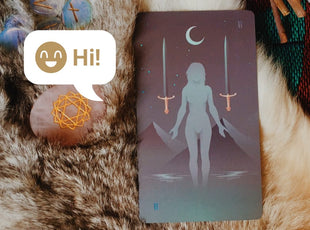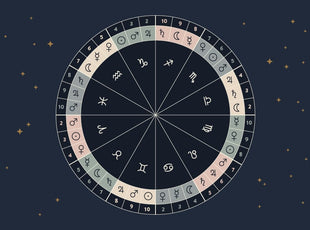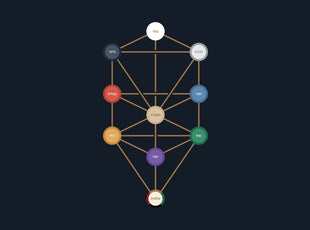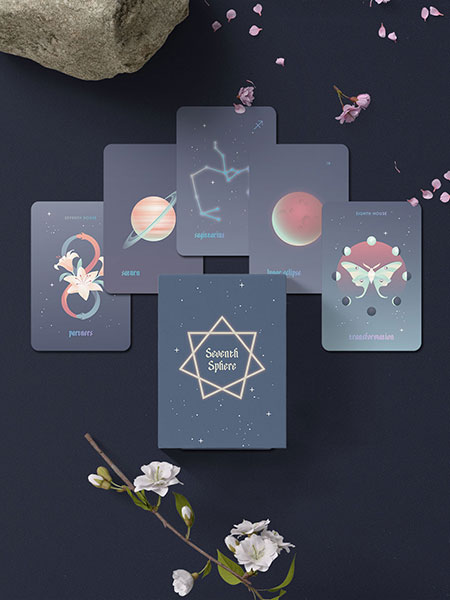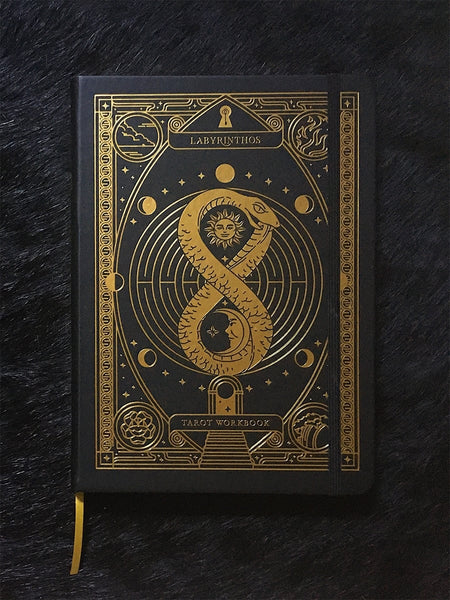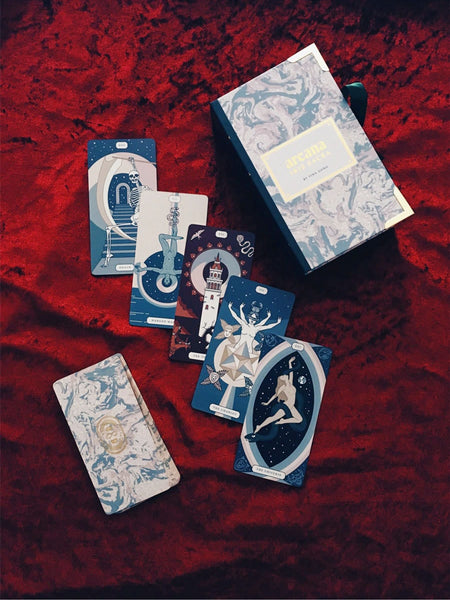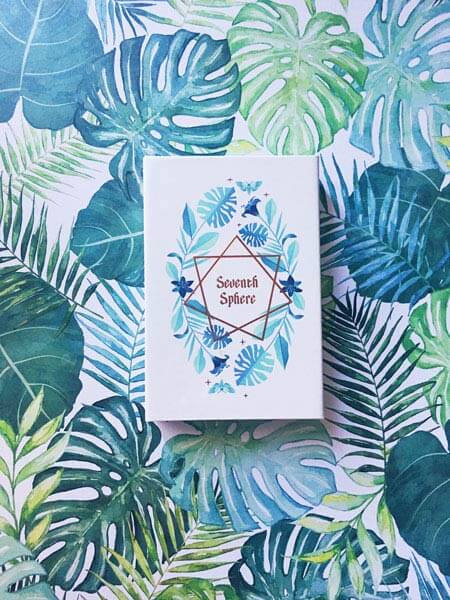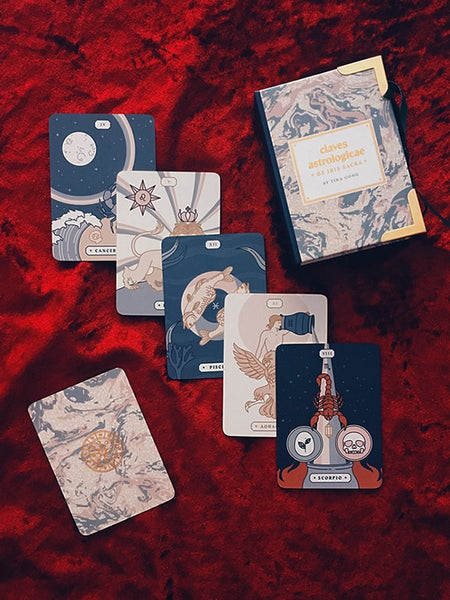✦ ✦ ✦
Tarot Deck Types: Rider Waite Smith vs. Marseille vs. Thoth
Published
One of the more frequent questions that I hear, whether it’s in response to the Labyrinthos App, or the decks, is about the differences that we sometimes see between the 3 most common tarot deck types or traditions: The Rider Waite Smith, the Marseille, and the Thoth. For example, if you’ve ever wondered why in some decks, Justice is the 8th card versus the 11th card, the answer is because of the differences within these tarot traditions. Today, we’re going to go through these differences, and also give you a correspondence list so you never get confused about which cards are equivalent.
Now, before we get into this, I wanted to make sure that we make the distinction between tarot traditions, like the three that we just mentioned, versus each artist-created change of the cards. Since each individual deck can be unique, you may see tarot decks that change the name of the suits, but keep their elemental affinities. For example, pentacles turn into stones, etc. The same goes for court cards, so you’ll sometimes see pages being called daughters, queens called mothers, etc. They may also have extra cards, but they’re exclusive to the particular deck. In general, most indie decks will follow the format of the Rider Waite Smith.
We’re going to go through a brief introduction of these tarot card traditions in chronological order.
The Tarot de Marseille
The Tarot de Marseille is one of the oldest surviving tarot card patterns that exist today. It’s still more common than the Rider Waite Smith decks in French-speaking countries. Its name comes from the city of its origin, where many decks in this similar style were made in the 1850’s. Unlike the Rider Waite Smith, this tarot deck set uses pip cards, where the minor arcana are represented not with the story-driven illustrations that we’re used to, but simple illustrations representing the number of items in the suit. This can either be more difficult for reading if you rely on visuals to interpret meanings, or freeing.
In an earlier article, we dealt with how we read the pips within the Marseille deck, and it is much more structural and formulaic than the Rider Waite Smith. This tarot deck is also sometimes still used as playing cards in French-speaking regions as well.
The Tarot de Marseille would later become the basis from which both Pamela Coleman Smith and Lady Frieda Harris would illustrate the Rider Waite Smith and Thoth decks, respectively.
The Rider Waite Smith Tarot Deck
We are most familiar with this deck in the English-speaking world, where it was the first deck illustrated by Pamela Coleman Smith, specifically for esoteric uses. The Rider Waite Smith tarot decks include illustrated minor arcana, filled with rich symbolism for esoteric and divinatory use. It was first published in 1909 alongside a book called “The Pictorial Key to the Tarot”, written by A.E. Waite, which provided the interpretations that many of us are familiar with today.
While both A.E. Waite and Pamela Coleman Smith were members of the Golden Dawn, an metaphysical society whose philosophy included tarot within a larger framework of esoteric concepts, the Rider Waite Smith deck was intentionally drawn to avoid strong astrological and kabbalistic associations since it was meant to be introduced to the mass market. Instead, the imagery was created from a series of visions that Smith recieved (Lon Milo DuQuette, “Understanding Aleister Crowley's Thoth Tarot”).
The Thoth Tarot Deck
Aleister Crowley is a prolific, controversial occultist known for the founding of Thelema. The Thoth Deck was illustrated by Lady Frieda Harris, a student of Crowley, who volunteered to illustrate a new version of tarot based on his Book of Law. The two of them worked together in order to create the Thoth tarot deck for about 5 years. They never lived to see it published. Unlike the Rider Waite Smith deck, which chose to exclude esoteric imagery in favor of more relatable, narrative-driven visuals, these cards were full of references to astrology, the Kabbalah and alchemy.
Marseille / Rider Waite Smith / Thoth Card Correspondences
For your convenience, we listed the corresponding cards within each of these traditions here below. We won’t be able to cover the subtle, yet complex differences between each of these cards, but this chart should provide you with a starting point for studying these yourself.
Since many of us are starting from the point of view of the Rider Waite Smith, I made it the first column for reference purposes.
Tarot Minor Arcana Suit Name Differences
Most of these will be pretty obvious once you actually look at the cards, but I'll include them for completion.
| Rider Waite Smith | Marseille | Thoth |
| Wands | Batons | Wands |
| Cups | Cups | Cups |
| Swords | Swords | Swords |
| Pentacles | Coins | Disks |
Tarot Court Card Name Differences
| Rider Waite Smith | Marseille | Thoth |
| Page | Page | Princess |
| Knight | Knight | Prince |
| Queen | Queen | Queen |
| King | King | Knight |
Join 2 million+ users
Looking for more insight into your relationship?
Download App
Tarot Major Arcana Name Differences
Some of these cards will be equivalent cards, but they'll be in a different order. For that reason, we included the numbers in this list as well (See Strength and Justice). The Marseille's Major Arcana are in French, so we included both the original French name as well as the English translation.
| Rider Waite Smith | Marseille | Thoth |
| 0. Fool | (No Number) Le Mat / Fool | 0. Fool |
| 1. Magician | 1. Le Bateleur / Juggler | 1. Magus |
| 2. High Priestess | 2. La Papesse / Popess | 2. High Priestess |
| 3. Empress | 3. L'Impératrice / Empress | 3. Empress |
| 4. Emperor | 4. L'Empereur / Emperor | 4. Emperor |
| 5. Hierophant | 5. Le Pape / Pope | 5. Hierophant |
| 6. Lovers | 6. L'Amoureux / Lovers | 6. Lovers |
| 7. Chariot | 7. Le Chariot / Chariot | 7. Chariot |
| 8. Strength | 11. La Force / Strength | 11. Lust |
| 9. Hermit | 9. L'Ermite / Hermit | 9. Hermit |
| 10. Wheel of Fortune | 10. La Roue de Fortune / Wheel of Fortune | 10. Fortune |
| 11. Justice | 8. La Justice / Justice | 8. Adjustment |
| 12. Hanged Man | 12. Le Pendu / Hanged Man | 12. Hanged Man |
| 13. Death | 13. (Unnamed Arcana) | 13. Death |
| 14. Temperance | 14. Tempérance / Temperance | 14. Art |
| 15. Devil | 15. Le Diable / Devil | 15. Devil |
| 16. Tower | 16. La Maison Dieu / House of God | 16. Tower |
| 17. Star | 17. L'Étoile / Star | 17. Star |
| 18. Moon | 18. La Lune / Moon | 18. Moon |
| 19. Sun | 19. Le Soleil / Sun | 19. Sun |
| 20. Judgement | 20. Le Jugement / Judgement | 20. Aeon |
| 21. World | 21. Le Monde / World | 21. Universe |
Rider Waite Smith vs. Marseille vs. Thoth Decks Infographic

4 comments
-
Jennthe Arcana Iris Sacra deck has both Princess AND Page, so how are we supposed to interpret them? the same?
-
MegThank you for this easy-to-follow breakdown. I’ve only used RWS style decks, but after beginning my current job in a mystic shop, I’ve been curious about the other style decks we carry.
-
RickThanks for the convenient layout. Very helpful. One slight correction: in the Marseille deck #6 is The Lover, not The Lovers. L’amoureaux is singular. The plural would be Les Amoureaux.
-
MelanieNo need to reply back. I just wanted to say how thankful I am for what you’ve done here. It’s amazing. The educational system and decks are beautiful beyond words
